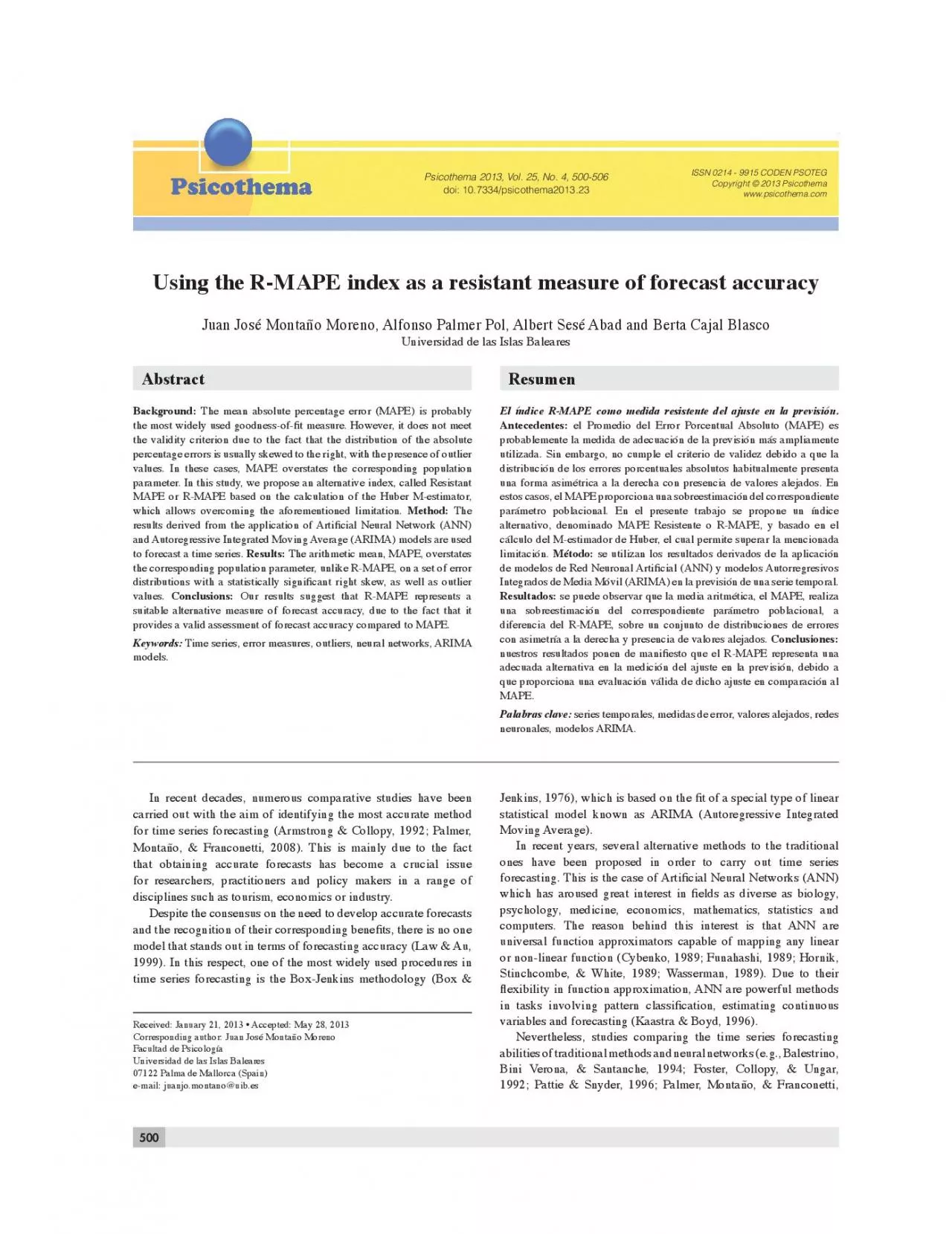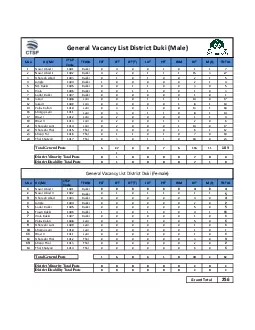PDF-Juan Jos Montao Moreno Alfonso Palmer Pol Albert Ses Abad and Berta Ca
Author : everly | Published Date : 2021-08-04
for time series forecasting Armstrong Collopy 1992 Palmer Montao Franconetti 2008 This is mainly due to the fact disciplines such as tourism economics or industry
Presentation Embed Code
Download Presentation
Download Presentation The PPT/PDF document "Juan Jos Montao Moreno Alfonso Palmer Po..." is the property of its rightful owner. Permission is granted to download and print the materials on this website for personal, non-commercial use only, and to display it on your personal computer provided you do not modify the materials and that you retain all copyright notices contained in the materials. By downloading content from our website, you accept the terms of this agreement.
Juan Jos Montao Moreno Alfonso Palmer Pol Albert Ses Abad and Berta Ca: Transcript
Download Rules Of Document
"Juan Jos Montao Moreno Alfonso Palmer Pol Albert Ses Abad and Berta Ca"The content belongs to its owner. You may download and print it for personal use, without modification, and keep all copyright notices. By downloading, you agree to these terms.
Related Documents














